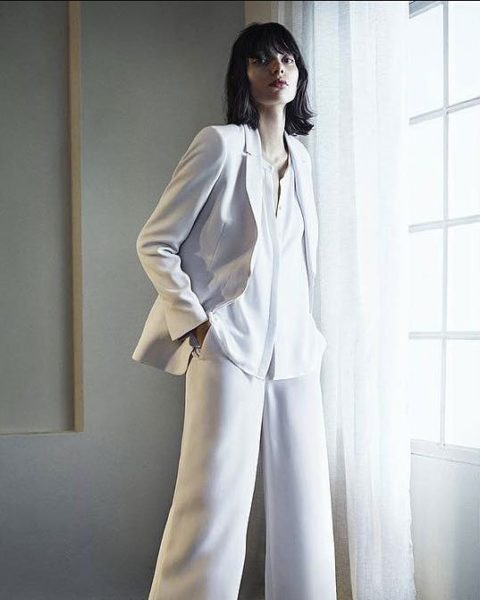How a Made-to-Order Suit Made Me Rethink My Body Type
I have a complicated relationship with shopping. When I do it, I’m usually alone. After having two kids and gaining 20 pounds, I find it hard to accept change-room commentary from a young person who just doesn’t understand my body. I’m one of Ashley Graham’s 3.5 million Instagram followers; I applaud her bravado, but I haven’t embraced her self-love mantra.
But, oddly enough, Tiger of Sweden’s made-to-order suit is taking me in the right direction. Most people know the brand, which started in 1903 on Sweden’s west coast, for its slim, ’60s “Rat Pack” vibe. Today, there are 70 Tiger of Sweden stores around the world. When I arrive at the Toronto location, on Ossington Avenue, there are four people waiting for me: two staff, a tailor and Tiger of Sweden Canada’s brand director, Laurence Slavin, who is impeccably turned out in one of the label’s classic tapered cuts. “We start every session with a consultation to understand the client’s needs, lifestyle, use for suits and personal style,” he says. “Not many clients realize how personal the process is.”
Made-to-order suits—unlike bespoke—use pre-determined samples that can be tested for fit. At Tiger of Sweden, there are three jacket, two pant and two skirt styles as well as 40 textile options for women to choose from. The company’s clientele is young and professional, but with fashion houses like Saint Laurent and Dolce & Gabbana sending pantsuits down the runway, the female fan club is evolving. A heightened interest in feminism and gender politics is also shifting the dial on pantsuits. During the U.S. presidential campaign, the #pantsuitnation tag associated with Hillary Clinton became a rallying cry. At the 2017 Golden Globes, actress Evan Rachel Wood opted for an Altuzarra pantsuit. She told red carpet host Ryan Seacrest she wanted “young girls and women [to] know that dresses aren’t a requirement and you don’t have to wear one.”
In-house tailor Dan Phan tackles my “trouble area” first: my booty. We spend at least 45 minutes on the pants as I try on two different styles and go up several sizes just to get them over my hips, since they are a slim cut. But as Phan tucks, pins and chalks the Yulia pants into place, I see a mirage forming in the mirror. The pants hug parts of me that normally make me cringe. I look good. All these years of shopping alone, cordoned off in the change room, or on a laptop in my bedroom have deprived me of experiencing the joys of a good fit. The two-button Emika jacket, with its thin lapels, is easier to fit and accommodates my 34DDs, but Phan suggests shortening the sleeves just a bit. I’ve spent years rolling my cuffs, but the right length looks sleeker.
When it comes to choosing a fabric, I turn to Slavin. I’m looking for a suit to wear in the evening, so he suggests a charcoal grey Italian wool with light flecks that give off a slight sheen. “You can’t experience luxury fabrics online,” says Slavin. “You need to touch it, feel it and feel comfortable with it.”
My measurements are sent to Europe, and six weeks later I return to the store for a final fitting. Phan suggests one small button adjustment at the waist, but everything else is perfect. The shorter sleeve is a revelation, and I feel altered (no pun intended) by the experience. I realize that it’s time to stop defaulting to oversized clothing to hide my curves. It might not always be MTO—at $1,200 for a suit, this service comes at a premium—but from now on, shopping will be about the fit, because, as Graham would say, #beautyisbeyondsize.








